
もちもちきな粉白玉団子(mochi mochi kinako shiratama dango)
I made a small ball-shaped dumplings with shiratamako(shiratama flour) and sprinkled it with kinako.
Shiratama dango is a Japanese sweet that is very popular among children and adults alike, and can be easily made at home and enjoyed in a variety of ways.
- Mochi mochi = Sticky
- Kinako = Soybeans flour
- Shiratama dango = Dumplings made with Shiratama ko (shiratama flour)
Dango and mochi are very similar, but dango is made from dango ko (dango flour) and mochi is made by grinding steamed glutinous rice. (Glutinous rice is called mochi gome in Japanese, and this is where the word mochi mochi comes from.)
Dango is generally referred to as dumpling and mochi as rice cake. Both Mochi and Dango are called Abekawa when sprinkled with soybean flour.
ko = powder
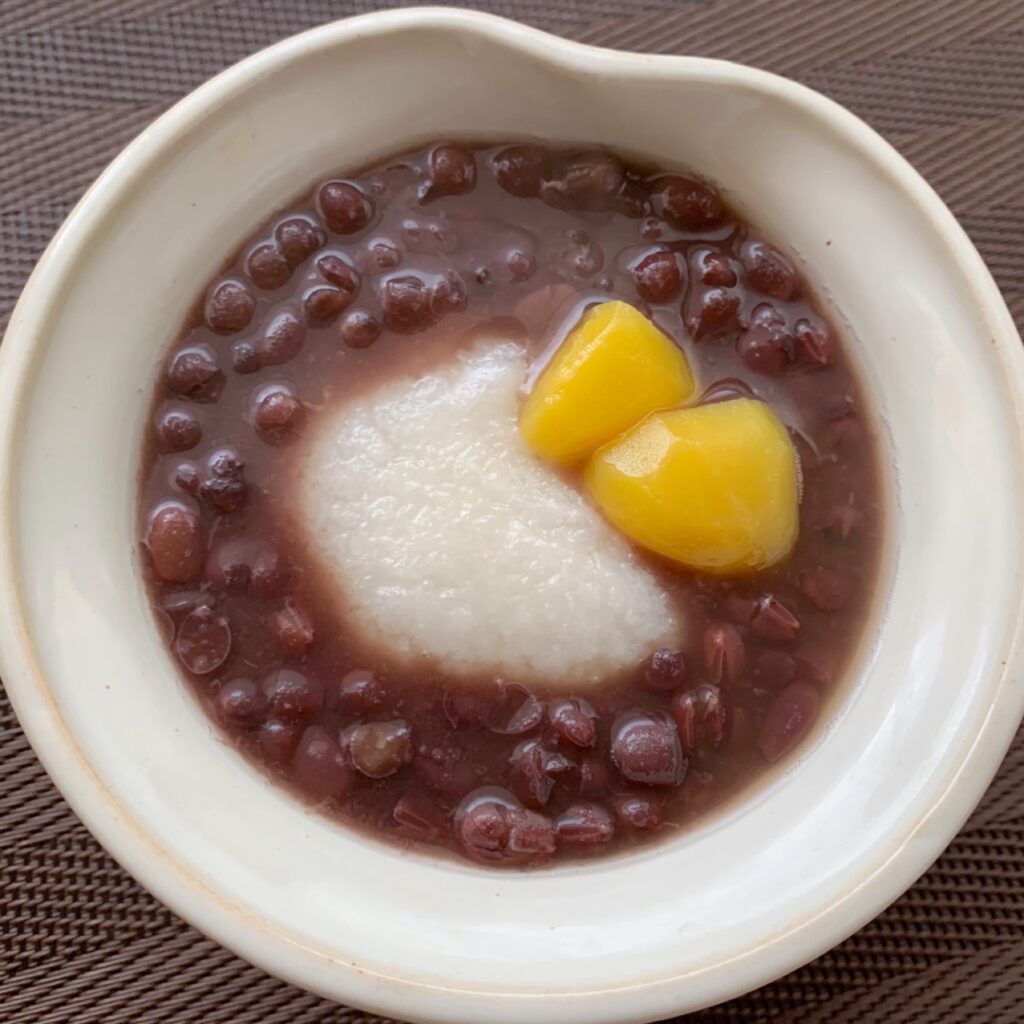
In Japan, it is customary to eat mochi during the New Year. Zenzai is a sweet soup made with mochi and red beans. As mochi is rarely available in homes outside of New Year, zenzai is sometimes made using shiratama dango instead of mochi. The recommended way to eat it is with a topping of sweet chestnut compote! For information on zenzai (oshiruko), please see this article. 👉 Authentic Oshiruko recipe (sweet soup with azuki and mochi)
What kind of food is Kinako??
Soybean flour is roasted, peeled and ground soybeans.
It has a fragrant aroma. It is also popular as a health food because it contains a lot of protein and minerals. Soybean flour can be used for cakes, cookies, and drinks in addition to Japanese sweets.
The name Kinako means yellow powder. However, soybean flour made from green soybeans(edamame) is pale green in color, so it is called ”ao kinako (blue soybean powder)” or uguisu kinako (uguisu soybean powder). Uguisu is the name of a pale green bird called a bush warbler.
Soybean flour is not only sprinkled on mochi, but is also sometimes eaten by sprinkling it on rice or ice cream. It is sometimes eaten mixed with milk or yogurt or made into jelly.
It goes well with black sesame and matcha, so it is also recommended to use it in Japanese-style parfaits.

NUTRITION FACTS : Kinako Shiratama Dango (Sweet dumplings)

- 906 kcal
- Protein 22.0 g
- Total Fat 8.3 g
- Total Carbohydrates 192.2 g
- Sodium1.0 g
INGREDIENTS : Kinako Shiratama Dango (Sweet dumplings) (5SERVINGS)
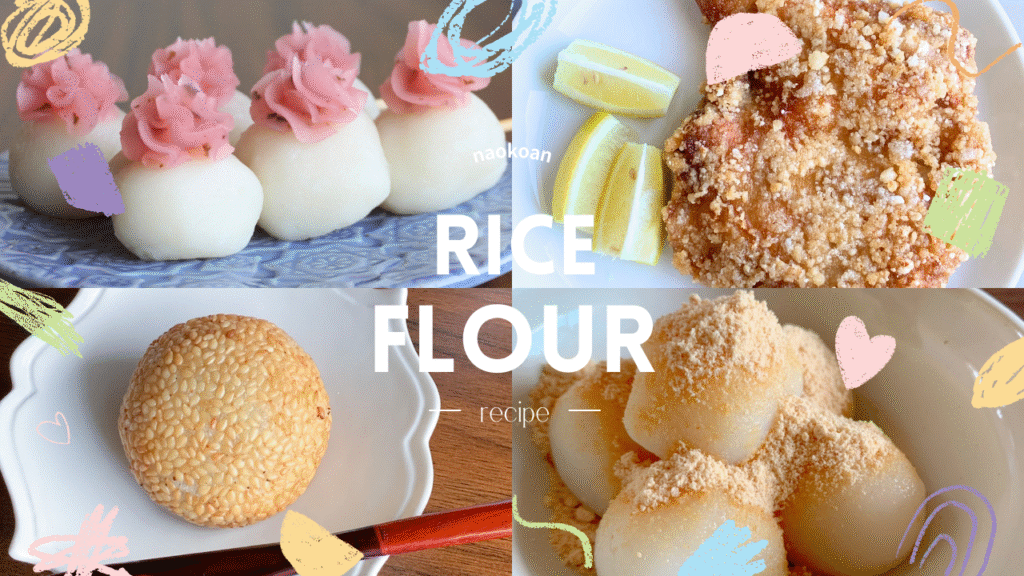
- Shiratama flour 200g
- Water 160g
Use 80-90% water for the amount of shiratamako.
- Soybean flour 25g
- Sugar 25g
- Salt 1g
How to make Kinako Shiratama Dango (Sweet dumplings)
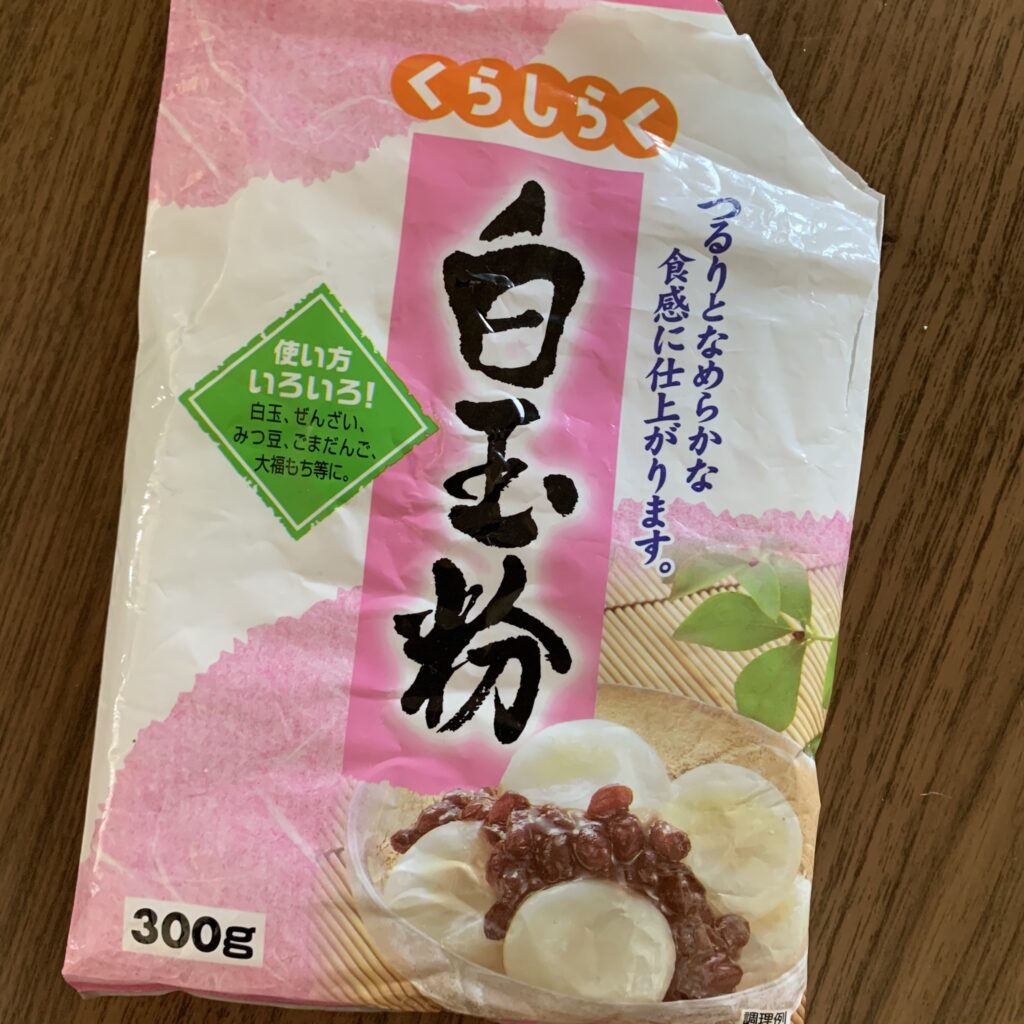

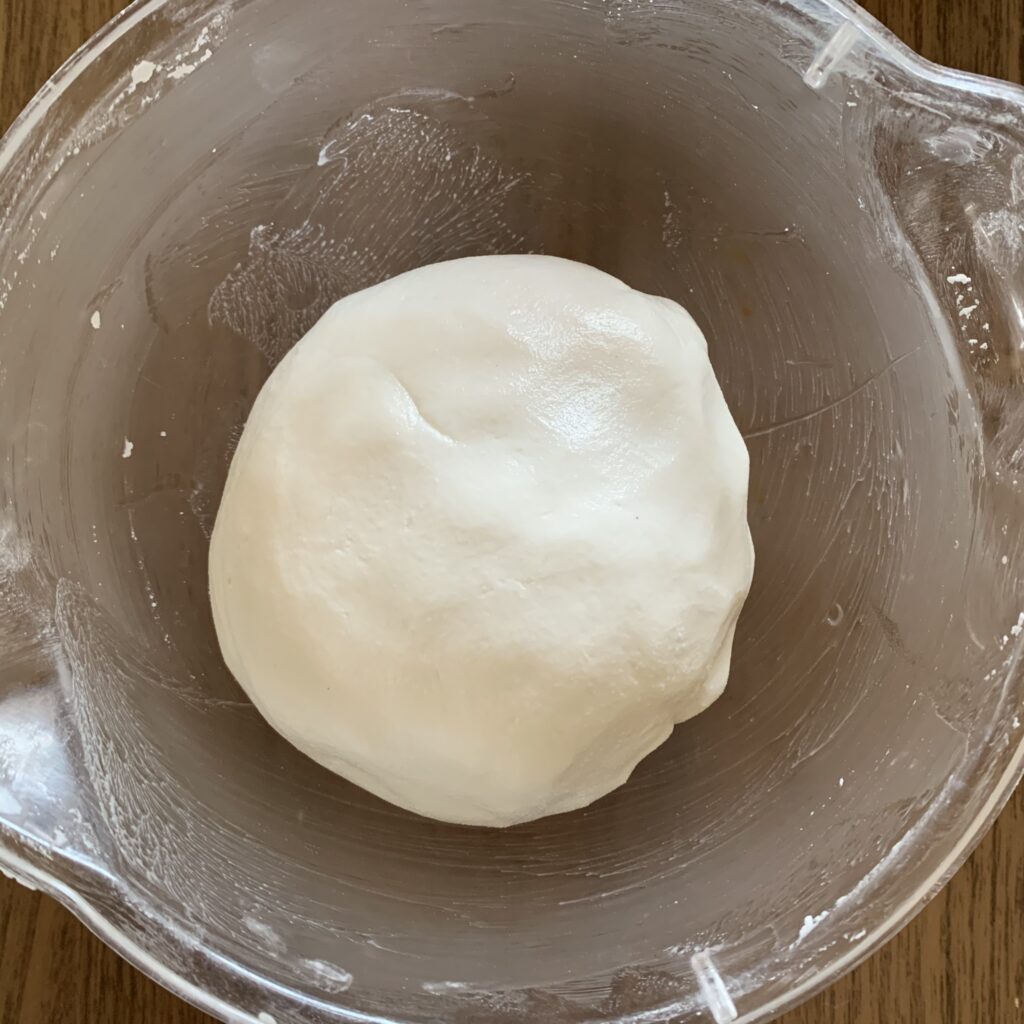
- Add water to the shiratama flour in 3 batches.
- Lightly knead each time you add water.
- It’s done when it’s as hard as your earlobe. (The ideal hardness is to break when pressed.)
- Roll into 15g and put in hot water. (About 24 dango can be made) Let’s heat it well, if the heat is not enough, the inside will become powdery.
- When the dango float, wait about 1 minute and remove them in cold water.
- Mix soybean flour, sugar and salt and sprinkle on the dango. Adding a little salt creates a synergistic effect that makes the sweetness feel stronger.
After boiling shiratama dango, you can freeze them and store them for about a month.
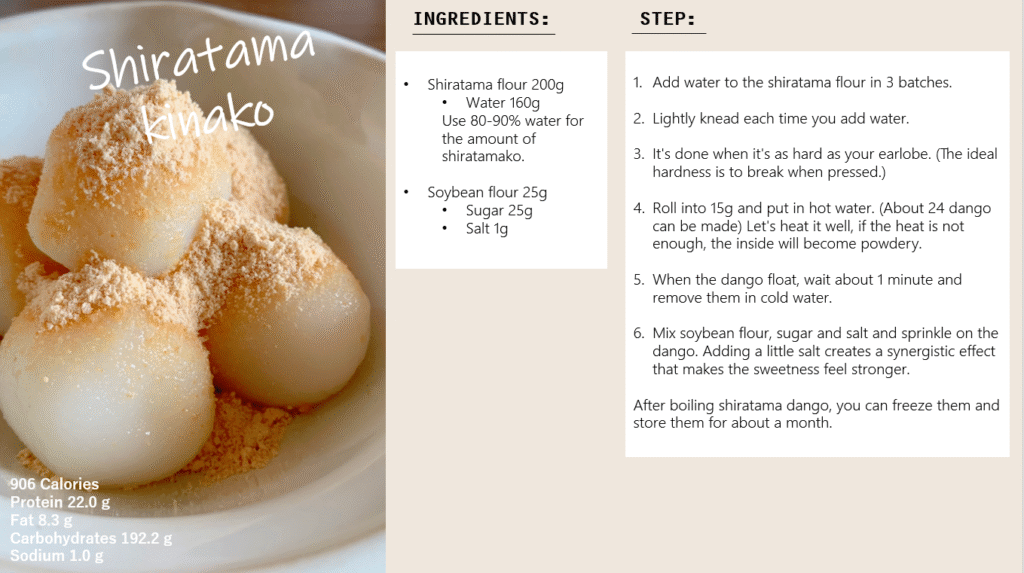
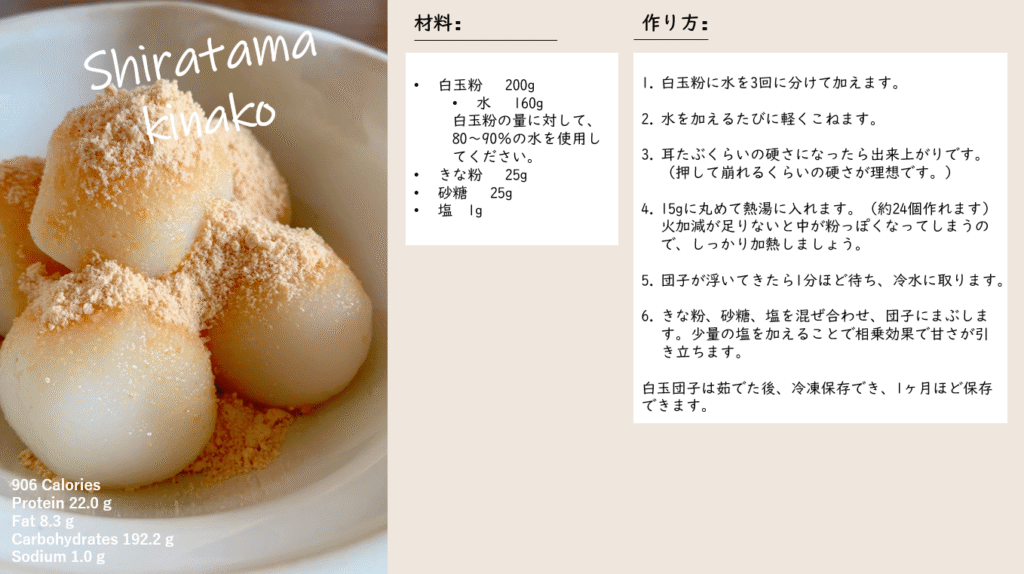
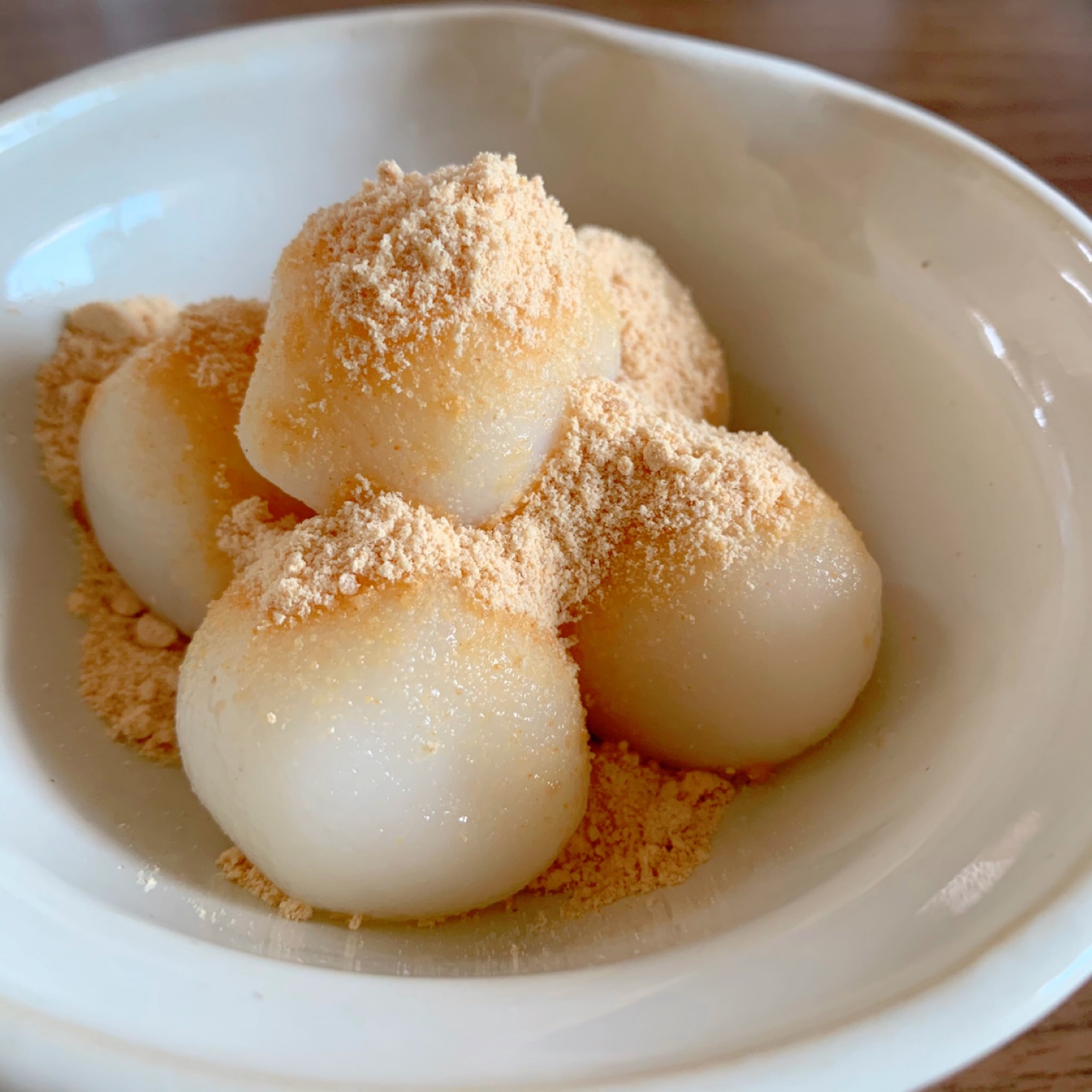
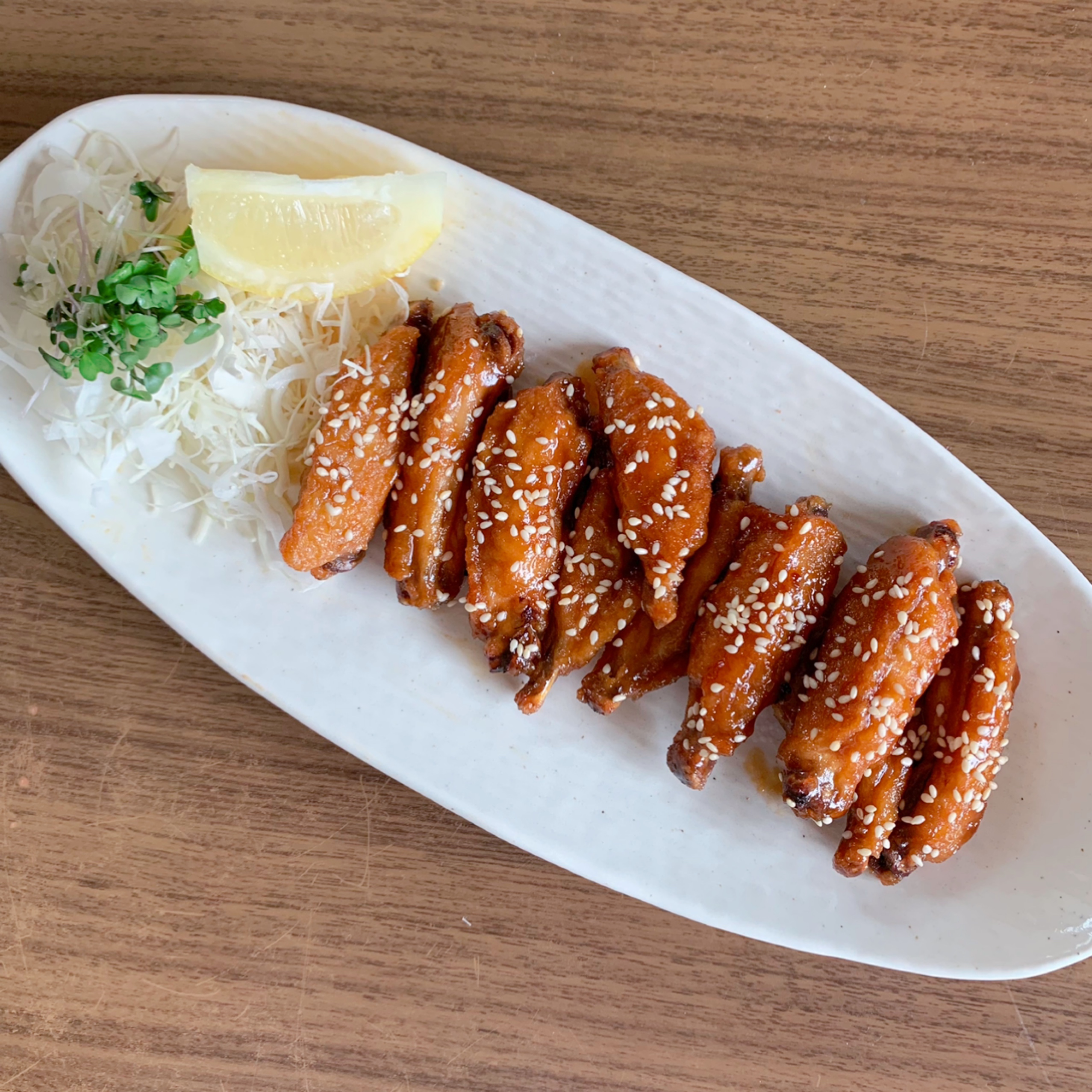
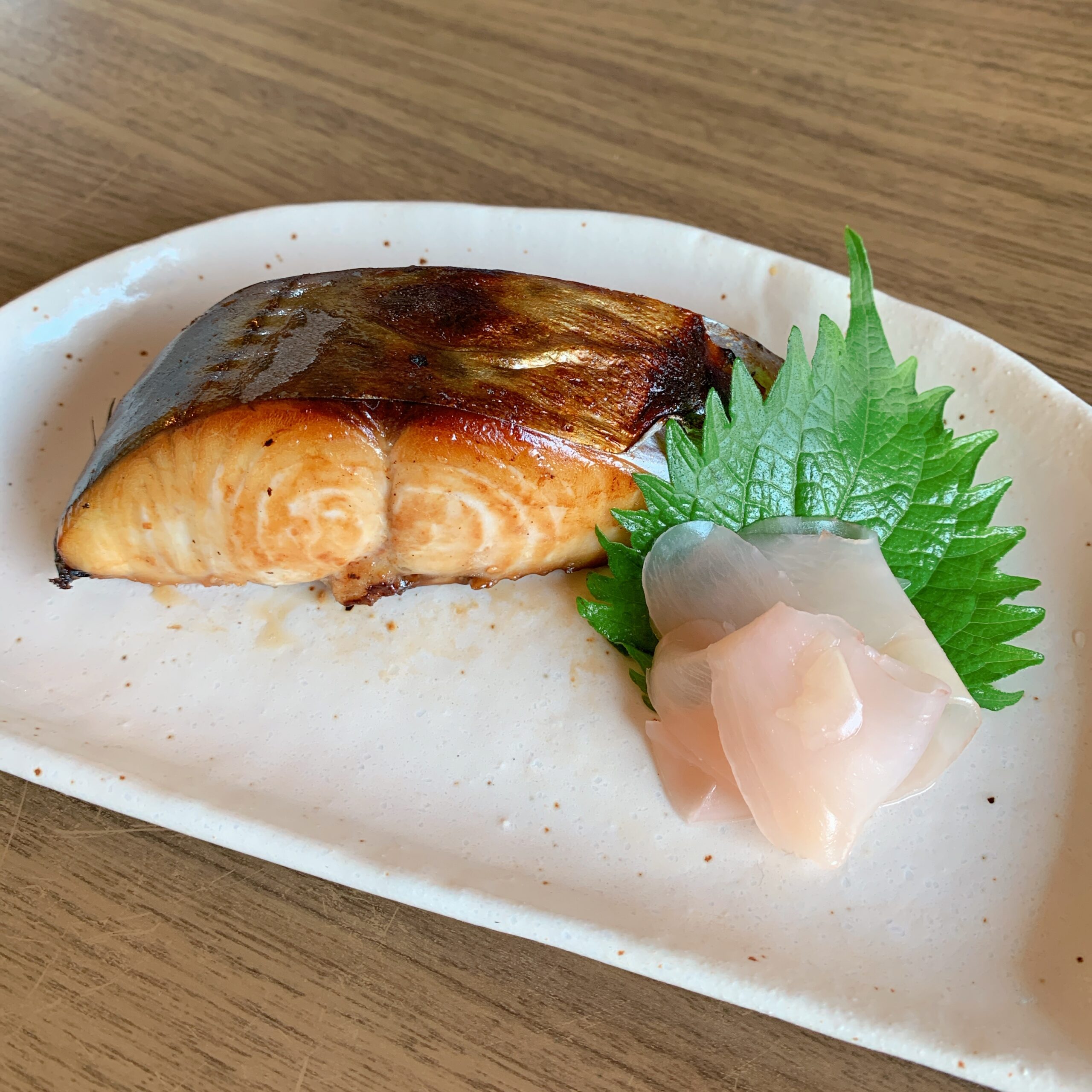
コメント